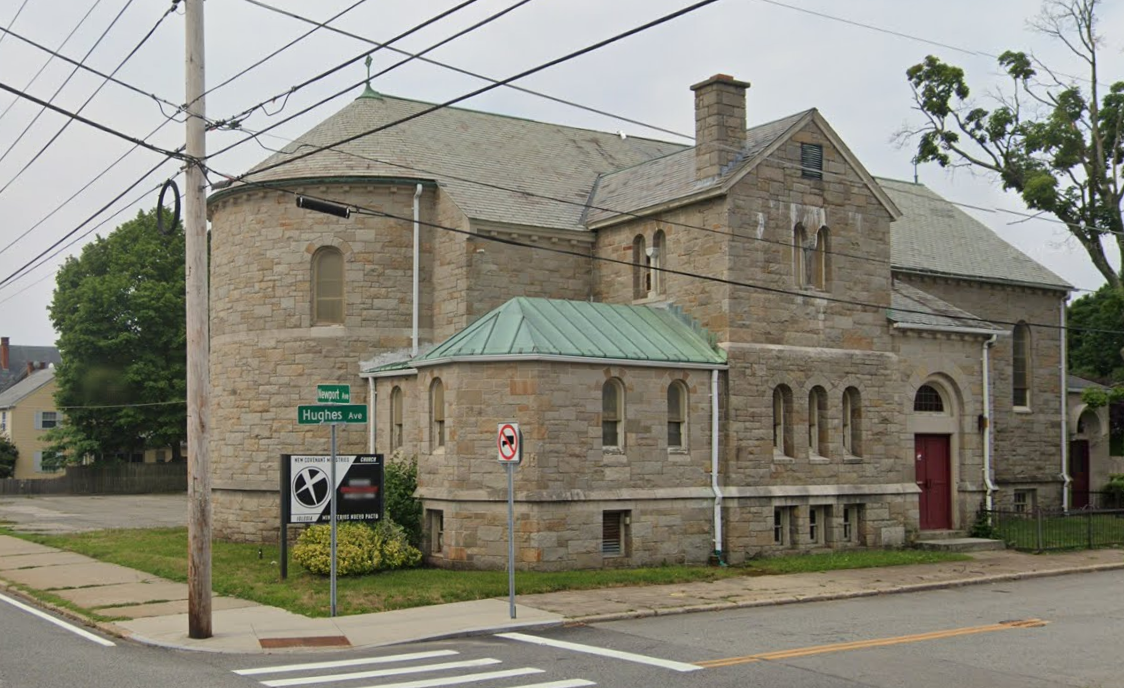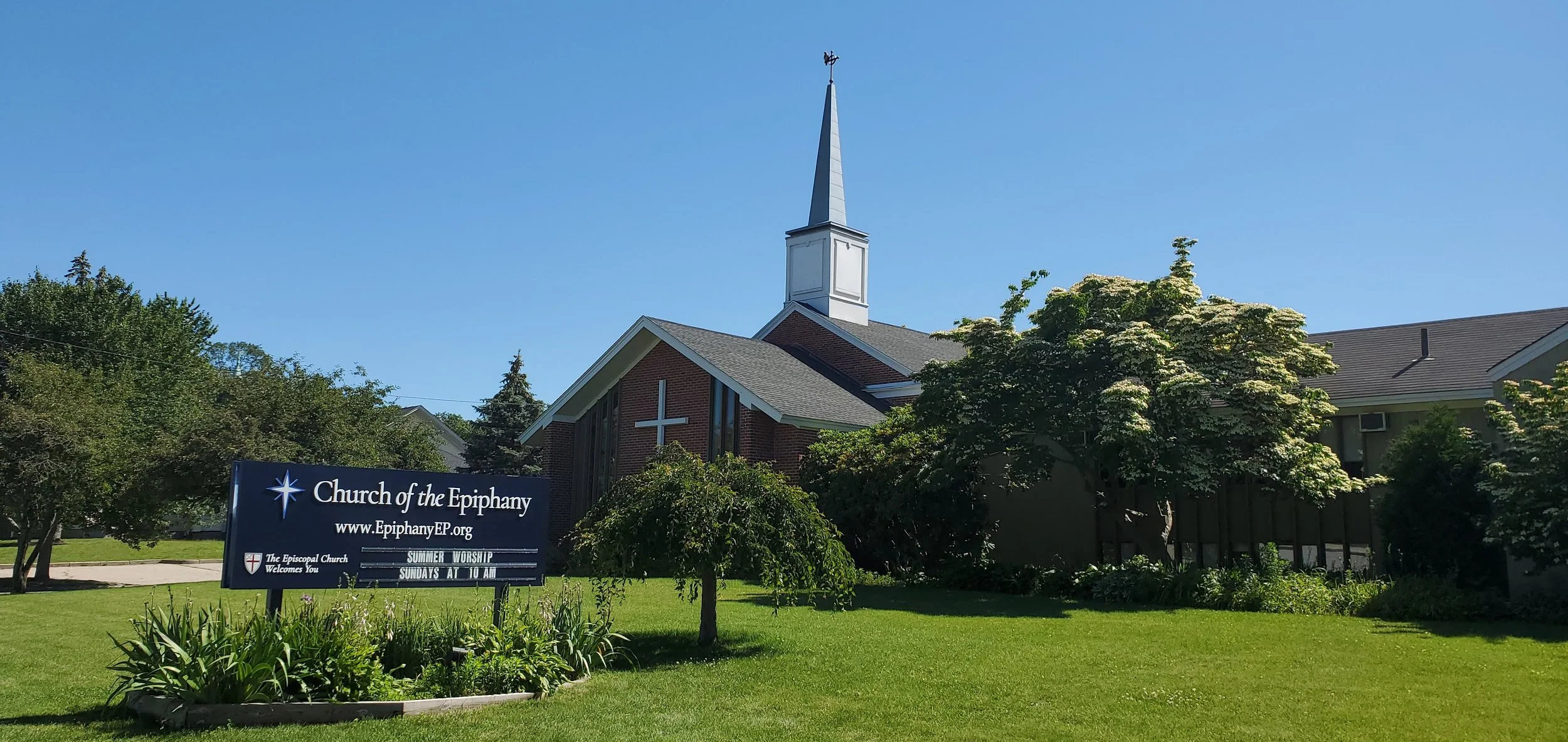
Our History
This is the story of three Churches, each in its own way part of the Community and of the lives of its Parishioners. These brief histories cannot begin to cover all the important events that have taken place.
Grace Church / 1901-1989
In the early 1900’s, Mr. Eugene Phillips, President of Washburn Wire Works, decided to build a church in memory of his daughter, Grace, who had died in infancy. The church was to serve as a community church, affiliated with any denomination willing to hold services there. The Episcopal Diocese of Rhode Island made the first move and Grace Church entered our diocese in 1905 as a mission church. The Rev’d Levi B. Edwards had come to serve as its first vicar by Christmas, 1901. Early church records are incomplete, but it was clearly through generous donations from local industrial firms, including Washburn Wire Works and Glenlyon Print Works, that the struggling young mission stayed open. The Phillips family, for whom the village of Phillipsdale was named, also strongly supported the church during the 1930’s.
During the 1950’s and early 1960’s, the church grew under the Rev’d Daniel Osborn’s 13 year tenure. In 1965, the Rev’d Dr. Tiffany became Rector and, under his leadership, the church continued to grow and reached its peak strength. During the late 1970’s and 1980’s, the number of active members continued to decline, and by 1989 there were only 17 pledging households with 40 communicants in good standing. During the 1980’s, parishioners took up again the possibility of merging with the Church of St. Michael and All Angels, though no action was taken.
Church of St. Michael & All Angels / 1944-1989
On September 17, 1944, papers were signed to form The Church of St. Michael and All Angels. Long before that, Ida Bridgham and her sister, Eliza Appleton, remembered that their mother, Mrs. Joseph Bridgham, had gathered a small group of Episcopalians in her home for services. This continued in other homes after her death. Many people who took an interest worked diligently to help this gathering get off the ground. There were many setbacks before the papers were signed, but in 1944, Miss Bridgham and Mrs. Appleton each donated one half of the land on which our church now stands.
On September 23, 1953, ground-breaking ceremonies took place for a planned church building; on July 24, 1954, an adult choir was formed under the direction of James Hallan, and the service of dedication for the new “upstairs church” took place on September 26, 1954. On May 15, 1955, the mission of St. Michael and All Angels became a parish.
On Easter Sunday, 1969, ground-breaking ceremonies were held for the new parish house, narthex, and church as we know it. The congregation burned the mortgage as celebration in 1971 at the Parish Annual Meeting. In May 1971, the George H. Henderson Memorial Courtyard was given by his wife, Mary.
St. Michael & Grace Church / 1989-2007
At a special parish meeting on December 3, 1989, the Church of St. Michael and All Angels and Grace Church voted to consolidate. The new name would be St. Michael and Grace Church.
St. Martin’s / 1913-2006
In 1913 the Rev’d W. F. Parsons was authorized by the Episcopal Bishop of Rhode Island to open a Sunday School and to institute a service of Evening Prayer in private homes. By 1914 it became known as St. Martin’s Mission and was progressing nicely. In 1915 the mission moved to the store on the corner of Armistice Blvd (Brook St.) and Newport Ave. (where Chelo’s Beef Hearth later was located). The Rev’d Lincoln Dwyer held services there.
Things were moving along and by 1920 the congregation moved to the Potter & Johnston lunch room at Grand and Saratoga Avenue. In 1922 Bishop James DeWolf Perry assigned Dr. William Townsend to the congregation and by 1921 he assumed full charge of the mission, becoming the first full time priest. Now all systems were go to move ahead and by 1932 a permanent basement and foundation were constructed at Newport and Hughes Avenues on land donated by the Potter family. The Sunday School was still located on Saratoga Avenue. Things were moving at a fast pace so that by 1941 a permanent church building was needed and the Vestry hired architects to design a Romanesque Style structure.
Many gifts had been given over the years and much work and planning had gone into this. For example, the Potter family had donated the land on which the church, parish house and rectory were build as well as the Altar which became part of the church. There was about to be another exciting gift to come to the church. A series of stained glass windows were commissioned and installed by the Charles Cornish Studio of Boston. Each window was to depict an important event in the life of St. Martin of Tours. The windows took seven years to complete and install, the first in 1945 and the last by 1952. We later learned that the Cornish Studio was second in quality only to Tiffany.
A recent photo of the front lawn, sign, grounds, and campus.
Church of the Epiphany / 2006-Present
On December 17th 2006, a Special Parish Meeting to vote on a merger with St. Michael and Grace Church in Rumford was held. Many meetings before that to decide what was best for all concerned had taken place. Questions were asked by both sides and the Rev’d Jennifer Pedrick of St. Michael’s stated that St. Martin’s would close on December 31, 2006 and on January 7, 2007 we would gather together to vote on by-laws and the name for the new church. On January 14, 2007 we became the Church of the Epiphany. The Rev’d Richard Shippee, who had been serving St. Martin’s, would join us for 6 months. Richard had once been a member of St. Michael and All Angels and so now, returning here as one of the priests, made us all very happy.
How many things we had in common – both churches started with cottage meetings – both had basement churches – both succeeded in completing a church. Now we had become one big family.
Our churches consist of a priest, perhaps an assistant priest, sometimes a deacon. Mostly though the church is people. The ones who attend Sundays and participate in the activities there. I think about a lesson in Godly Play about the Church year. It tells of how the Church tied the ends together to make a complete circle where all the mysteries of the Church follow one another to make a whole. How as the year progresses and how as the days darken it seems as if it all may end, then suddenly “Advent”. It’s New Years in the Church – the beginning. For every beginning there is an ending and for every ending there is a beginning and it goes on and on.
— Researched and written by Ruth Porter, Church Historian





